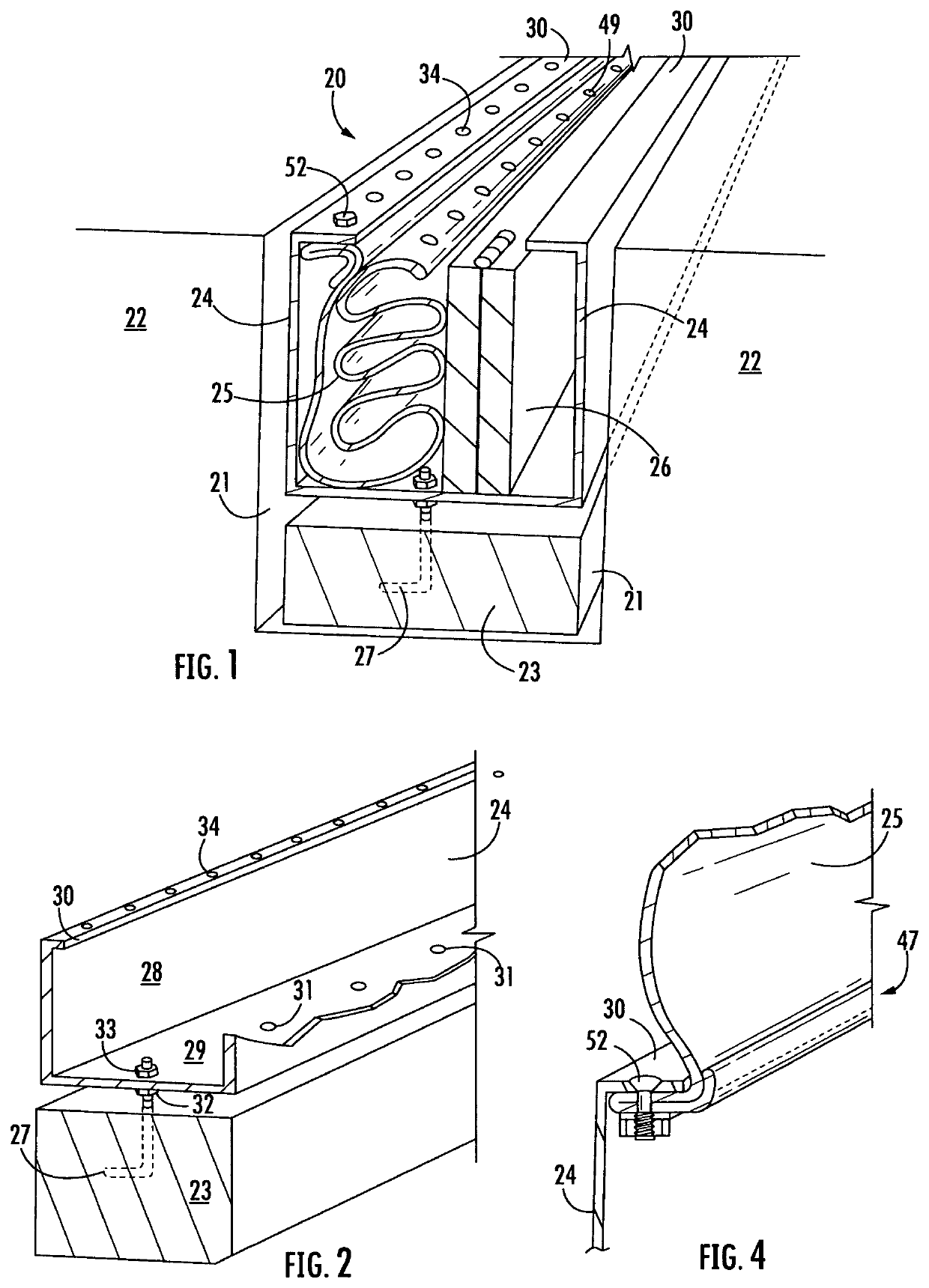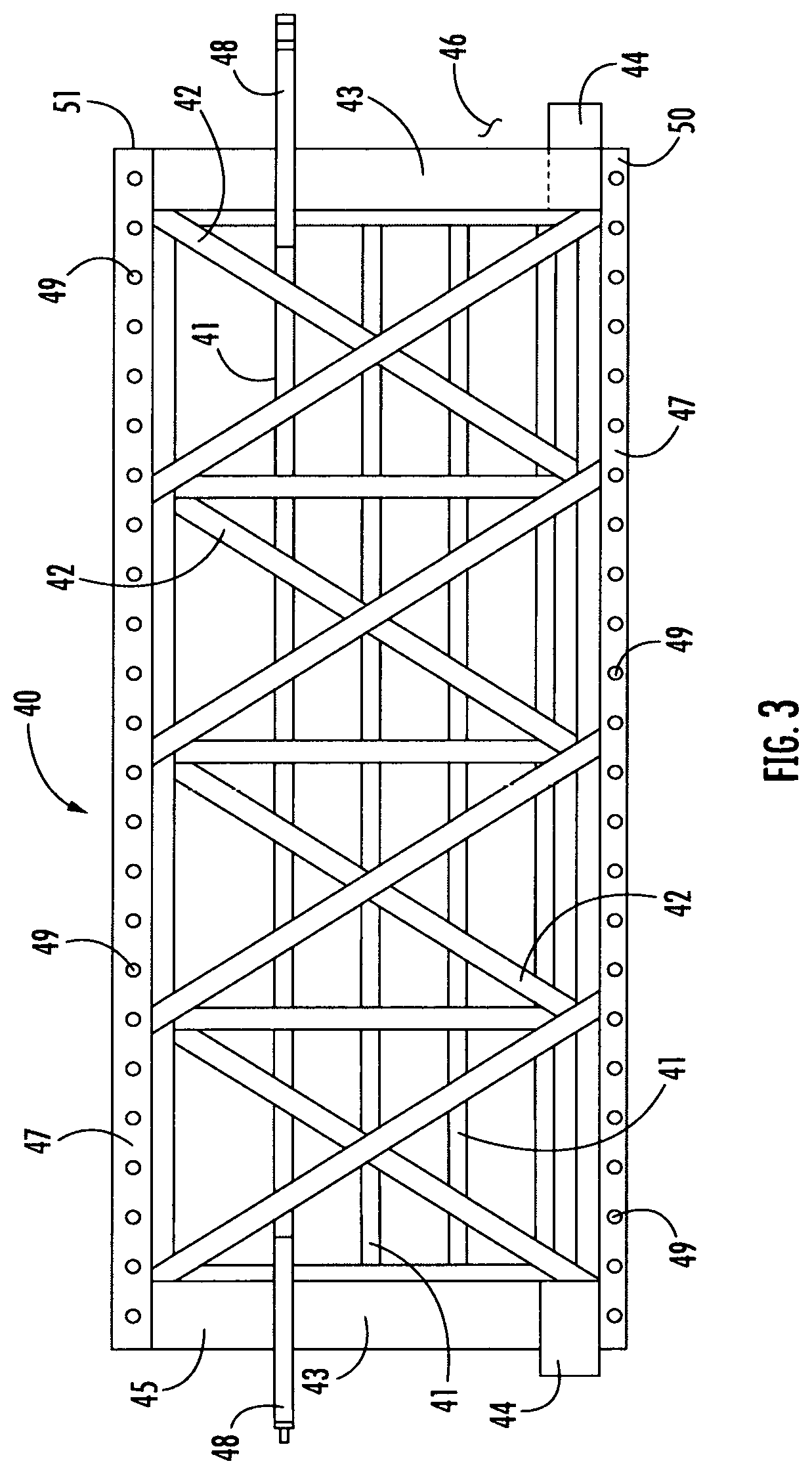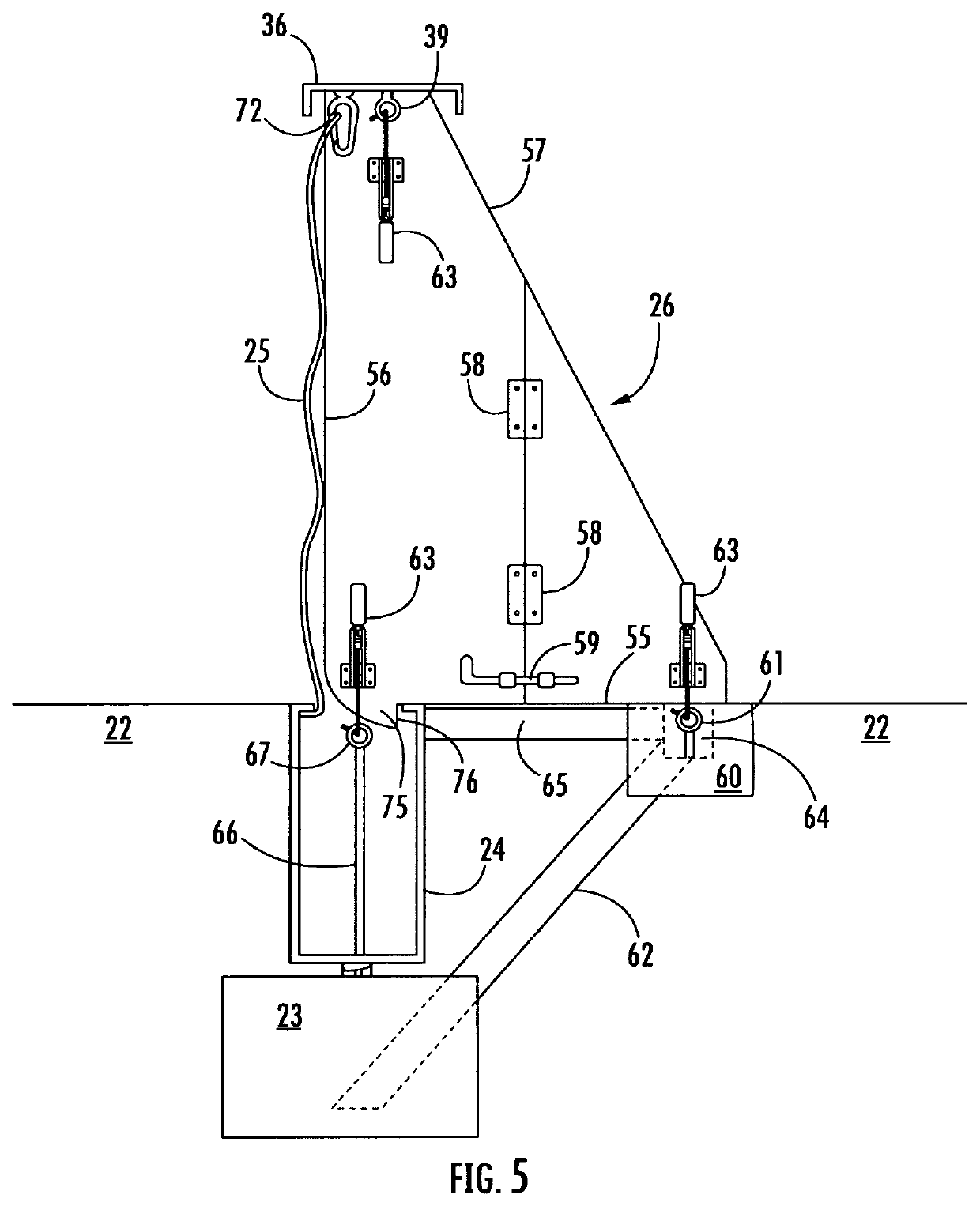Permanent below ground flood barrier installation
a flood barrier and installation technology, applied in the field of permanent below ground flood barriers, can solve the problems of insufficient protection, insufficient flood barrier, and insufficient protection of existing levees, and achieve the effects of ensuring stability and weight of flood barriers, easy removal of components, and convenient deploymen
- Summary
- Abstract
- Description
- Claims
- Application Information
AI Technical Summary
Benefits of technology
Problems solved by technology
Method used
Image
Examples
Embodiment Construction
[0039]The flood barrier assembly 20 provided by the instant invention consists of six basic components, a trench 21 dug into the ground 22 to surround the area to be protected, a poured concrete ballast 23 running the full length of the trench 21, a housing 24 disposed within the trench 21 above the ballast 23 and connected thereto, a flexible and water impermeable membrane wall 25, foldable supports 26 to shore up the membrane wall 25, the latter two components to be stored within the housing 24, and a cover 36 for the housing 24. This may seem an oversimplification, but may clearly indicate that once in place, these few components may offer the necessary protection to property in the face of severe weather. All components except the cover 36 may be seen in FIG. 1.
[0040]The flood barrier installation first requires a site-plan carefully constructed after a thorough topographical survey of the property or access to FEMA maps showing the infra structure of the land to be protected as...
PUM
 Login to View More
Login to View More Abstract
Description
Claims
Application Information
 Login to View More
Login to View More - R&D
- Intellectual Property
- Life Sciences
- Materials
- Tech Scout
- Unparalleled Data Quality
- Higher Quality Content
- 60% Fewer Hallucinations
Browse by: Latest US Patents, China's latest patents, Technical Efficacy Thesaurus, Application Domain, Technology Topic, Popular Technical Reports.
© 2025 PatSnap. All rights reserved.Legal|Privacy policy|Modern Slavery Act Transparency Statement|Sitemap|About US| Contact US: help@patsnap.com



